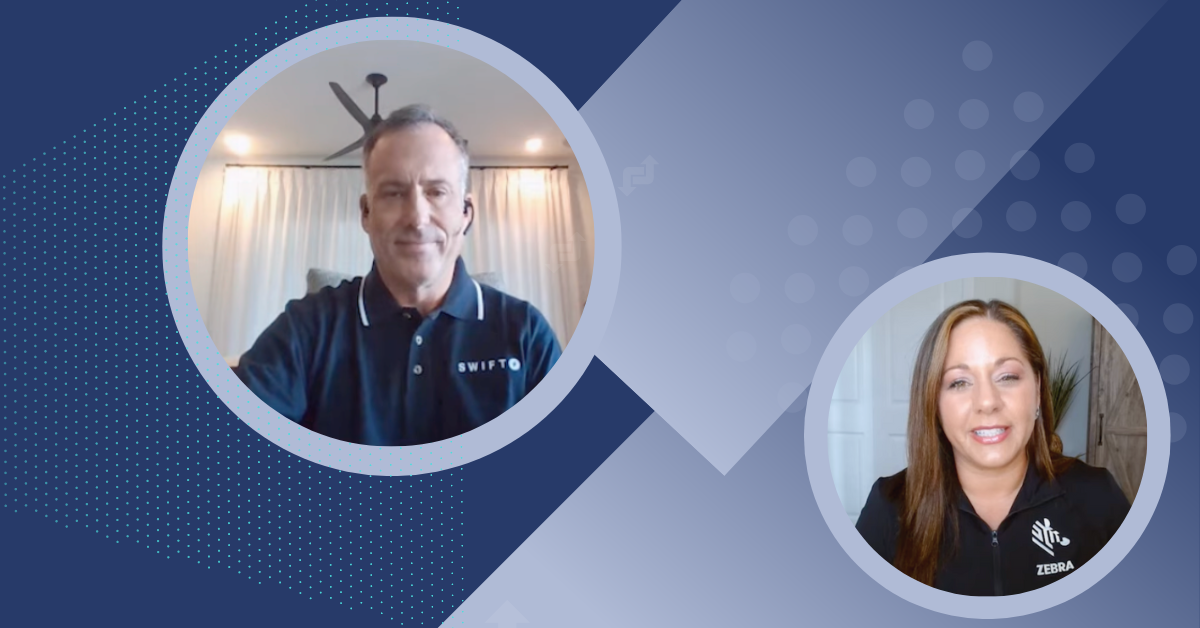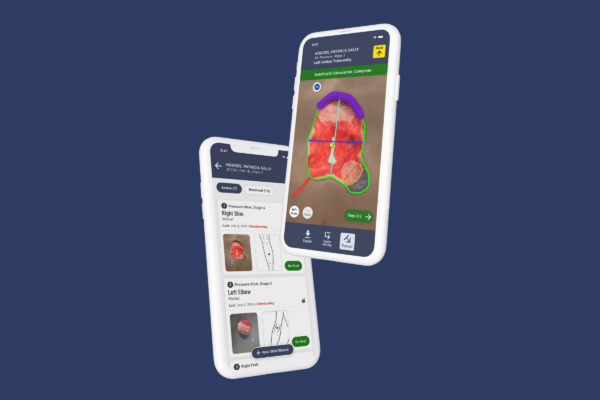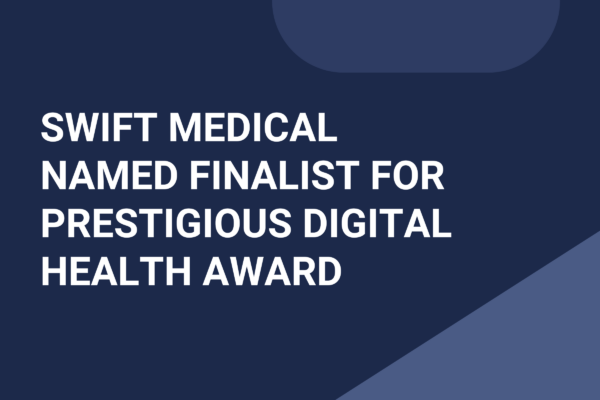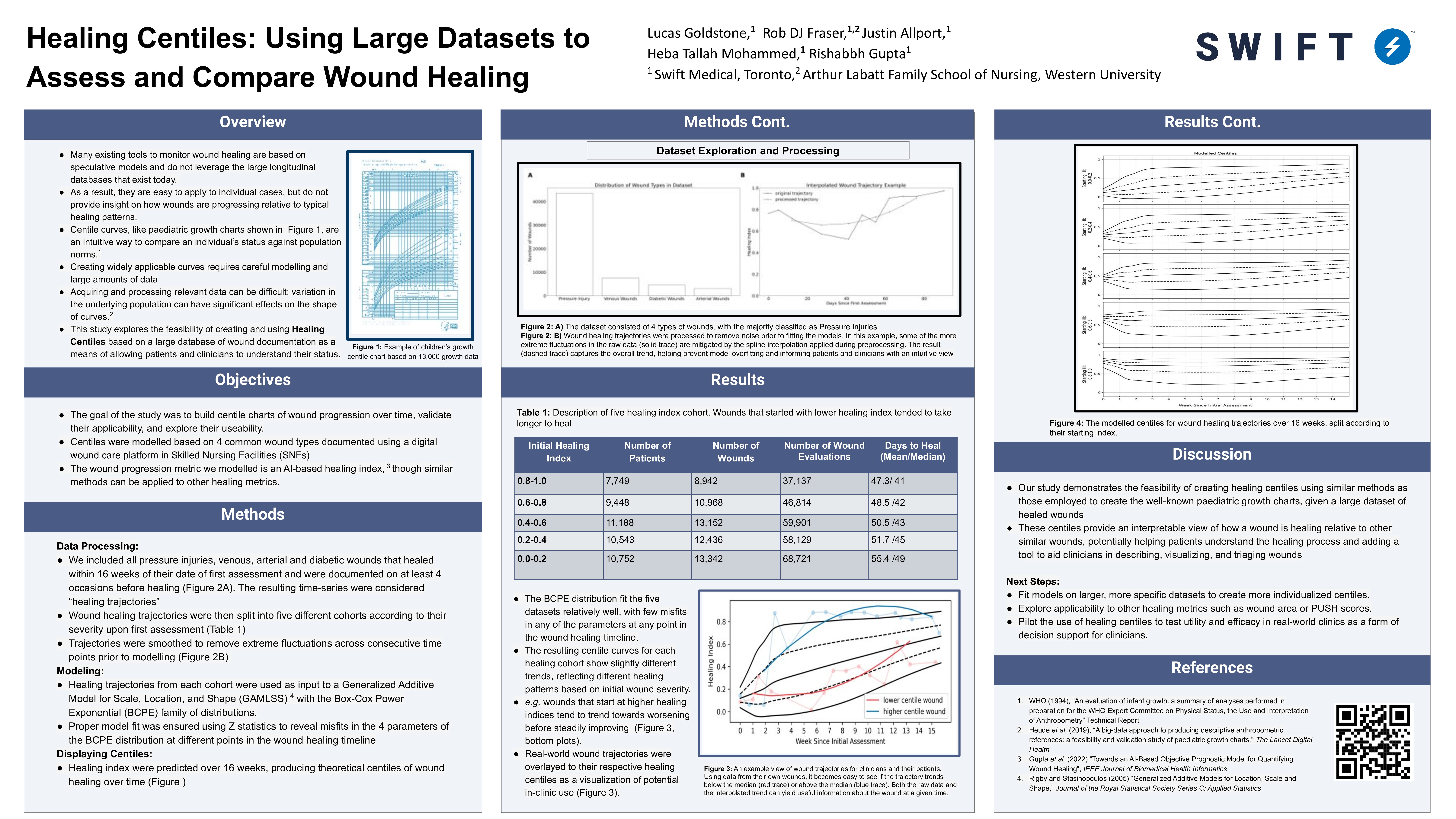Swift Medical’s CEO, Brian Litten, sat down with our partner Zebra Technologies to discuss how we are working to expand healthcare providers’ access to a digital wound management solution. The interview is part of Zebra Technologies’ ISV Influencer Series highlighting their partners. Watch the full interview or read the transcript below to hear about the real-world problems we are helping to solve such as:
- Reducing patient risk and improving overall care with digital tools to ensure accuracy and minimize variability.
- Improving efficiency and clinical mobility with digital wound care workflows that save time and stress and reduce staff burnout.
- Visualizing real-time information to help streamline treatment decision-making.
Melissa:
Welcome to another episode of the Zebra ISV Influencer Series! I’m your host, Melissa Smith, the Alliance Account Manager for Healthcare and Government Partners in North America. On today’s episode, we have the distinct honor of working with Brian Litten, Chief Executive Officer, from Swift Medical. Swift Medical is a digital health company focused on improving clinical and economic outcomes in wound care management – creating a new standard for care. Let’s kick this off Brian by telling us one fun fact about you that we wouldn’t find on LinkedIn in your bio.
Brian:
It’s a pleasure to be here today. Thank you and thank Zebra for having me here. A fun fact you would not find on my bio anywhere is that I am a certified bourbon steward. When my son graduated from college as a birthday gift, I took him to the Bourbon Trail where we tasted and learned about bourbon. When we came back, we challenged each other to go through an extensive set of course materials and training and took exams which we both passed with flying colors. We became the equivalent of a sommelier with wine, a bourbon steward, or an official taster of bourbon.
Melissa:
That’s brilliant! Really interesting, what a fun fact. Thank you for sharing! We’re really excited about the Swift Zebra partnership. Can you explain further how Swift works with Zebra Technologies?
Brian:
Absolutely. Swift as you mentioned at the onset is a digital health company. We’re focused on leveraging complex imaging technology that was developed for the aerospace industry, specifically for space exploration. We use this to improve clinical and economic outcomes associated with wound care management. We have developed a new standard of care for treating wounds that’s now being used in over 4,000 facilities across North America. We are headquartered in Toronto, Canada but we have operations across the US and Canada. In fact, I am sitting right now in my home in South Carolina. Working with Zebra, Swift is able to turn a tablet, smartphone, and Zebra’s healthcare tablets and touch mobile computers into FDA-approved medical devices for imaging and documentation around wound care.
Melissa:
So, tell us a little more – why wound care?
Brian:
Wound care is one of the most costly and overlooked threats to patients in our healthcare system today. In Medicare alone, over 8.2 million patients in the US, and this number is surely underestimated, are costing an estimated 96 billion dollars annually. When you add to that the Medicaid population, that number is probably over twice as much, and shockingly over 50% of patient encounters that involve wounds may never heal. That’s why we focus on wound care. There are more people with a chronic wound than there are people with breast cancer, colon cancer, lung cancer and leukemia combined. The market is only projected to increase substantially with aging populations and surging rates of obesity and chronic diseases, like diabetes and kidney disease.
Melissa:
Brian, is technology the standard practice today in wound care?
Brian:
Melissa, I wish it were but sadly it’s not the case…yet. Still today it is most common to see manual methods used to document wounds, for example, paper rulers. Paper rulers lead to inaccurate wound measurements, imprecise results and variability among the clinicians that are using it. Even if technology is used, it’s just a regular camera where the images vary substantially from clinician to clinician and lighting condition to lighting condition. The result of all of that is that wounds are taking longer than they need to take to heal, they require more provider visits, they have bigger clinical and financial implications and they are painful for the patient. But, by contrast, the partnership between Swift and Zebra brings AI-powered, scientifically-calibrated wound imaging and digital workflows that improve efficiency, reduce patient pain and risk and provide real-time informed decision-making that alleviates all those legacy issues.
Melissa:
Paper rulers definitely sound like a scary thought so I am glad you’re changing the technology. What are the key business challenges that you are tackling for your customers today?
Brian:
I think across the entire healthcare ecosystem you’re seeing challenges related to staffing, hiring, retention and even staff burnout. Care delivery is really a big challenge. By leveraging technology like Swift within Zebra, we’re leading to improved workflows for clinicians and higher satisfaction rates among those clinicians who address those business challenges in a powerful way. We also have the ability through 8 years of aggregated data to understand quite specifically the impact we’re having clinically and financially. So, we’re able to support new opportunities that our customers are getting involved in such as value-based care by being able to understand our impact on reducing high-cost items like hospital admissions, extended length of stay, preventable readmissions and ER visits.
Melissa:
This is a really great technology and may sound a little complicated to use. Can you tell us how long it takes a clinician to learn Swift Skin and Wound?
Brian:
Melissa, using Swift is not much different from using any other app on your smartphone. It does require a degree of training, but only one hour of training. We have training modules that we provide clinician to clinician. They get staff comfortable using the technology. We empower clinicians through the use of technology to operate at the top of their licenses.
Melissa:
How does a customer know they need a digital wound management solution? What kind of indicators that an organization would benefit from having a digital wound management solution in place?
Brian:
Great question Melissa. If you were walking around your care organization, wherever you might provide care to patients, and you see clinicians using paper rulers, you know you need Swift. If you see manual methods, or if you see clinicians taking pictures on their iPhones without the benefits of the Swift app, those are environments that are perfect for the introduction to Swift. Also, as provider organizations struggle with staffing shortages and time constraints these tools help to address those issues.
Melissa:
Pressure injuries have a high prevalence in the US and your market. How could Swift help a company experiencing pressure injury problems?
Brian:
To level set, pressure injuries are sometimes called bed sores. Those occur from the pressure that comes from lying in bed or sitting in a wheelchair and usually affect people who have limited ability to move. These pressure injuries affect between one and three million Americans each year and they present a significant challenge in our healthcare ecosystems. By using Swift, we’ve documented that our customers have realized incredible savings by reducing pressure injury prevalence by up to 77% and reducing hospital-acquired pressure injuries by 5.65.
Melissa
What kind of ROI can customers expect?
Brian:
The ROI associated with Swift touches on all of the areas that I’ve covered so far in terms of improvement to workflow and documentation that reduces risks of litigation. But, importantly and powerfully, Swift has documented these strong compelling clinical and financial outcomes in ROI for our customers. And we are seeing the impact on outcomes which means:
- 14%+ reduction in hospitalizations related to wounds
- 7% reduction in emergency room visits
- 62% reduction in length of stay
- 37% faster wound healing time and
- 35% reduction in wound prevalence.
Melissa:
That’s amazing! What do you think is the biggest challenge in the wound care space today?
Brian:
I think the biggest challenge in the wound care space is that the numbers are growing significantly with aging populations and with the growth of chronic disease. It is difficult for provider organizations to attract and retain clinical talent to support the treatment of wounds. I think when you present an effective integrated technology solution that empowers the clinician and drives clinician satisfaction and thereby improves outcomes for patients as well, you’re solving with the Zebra-Swift partnership a whole gamut of problems that confront our customers every day.
Melissa:
That’s great! Brian, thank you so much for being with us today and sharing your knowledge and experiences with our viewers, especially in the wound care space. You can find more out about Swift Medical if you go to swiftmedical.com or you can also use Zebra’s partner portal to look up Swift Medical. Thank you, everyone, for your time today. We really appreciate it. Remember that Zebra and our ISV alliance partner network align with your committed success.





